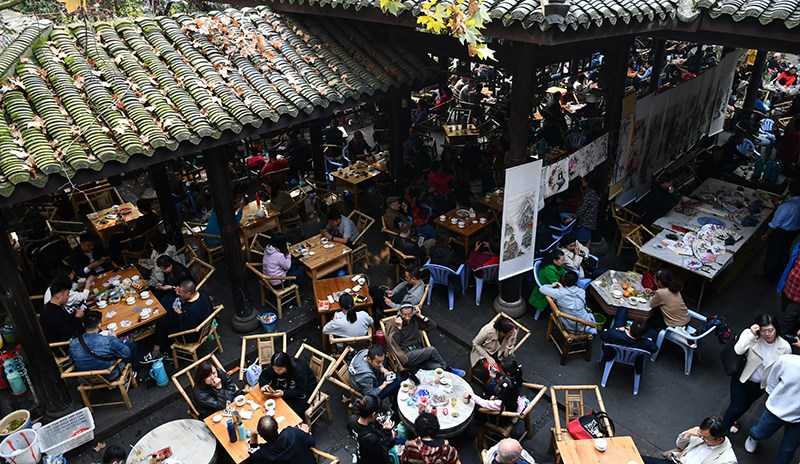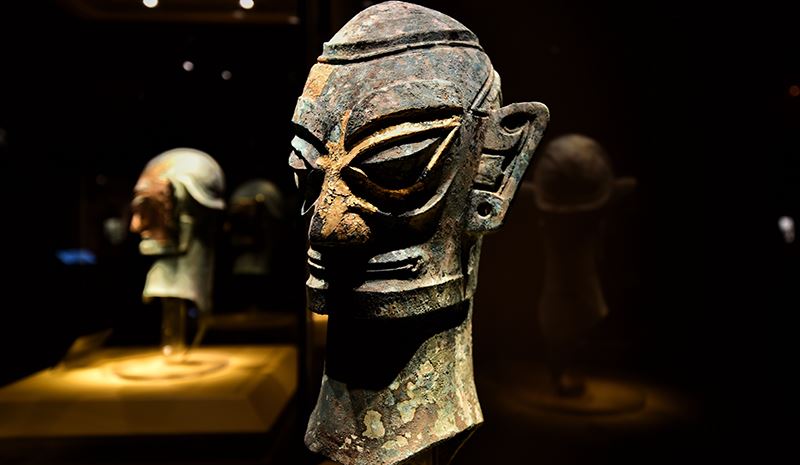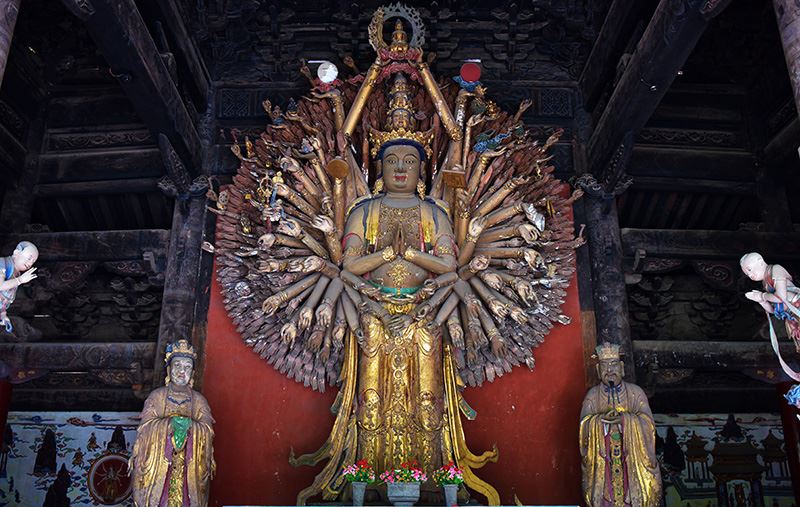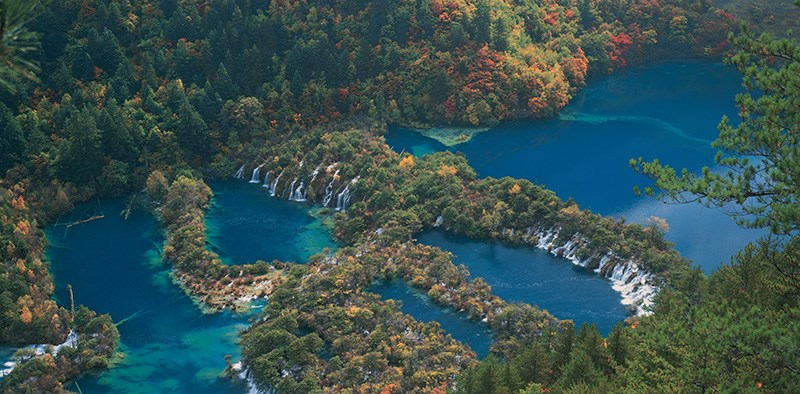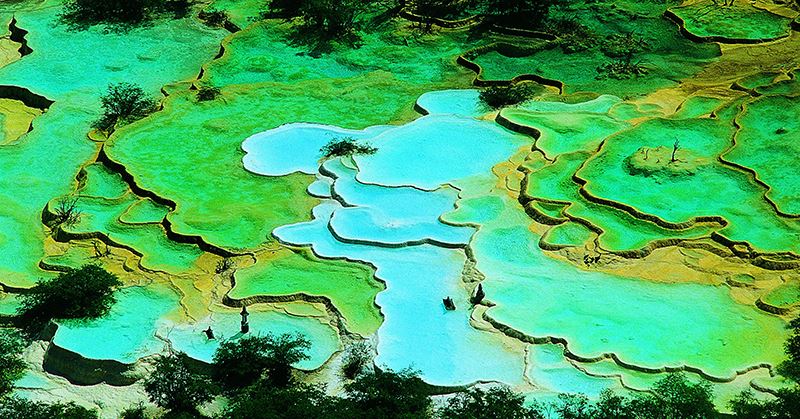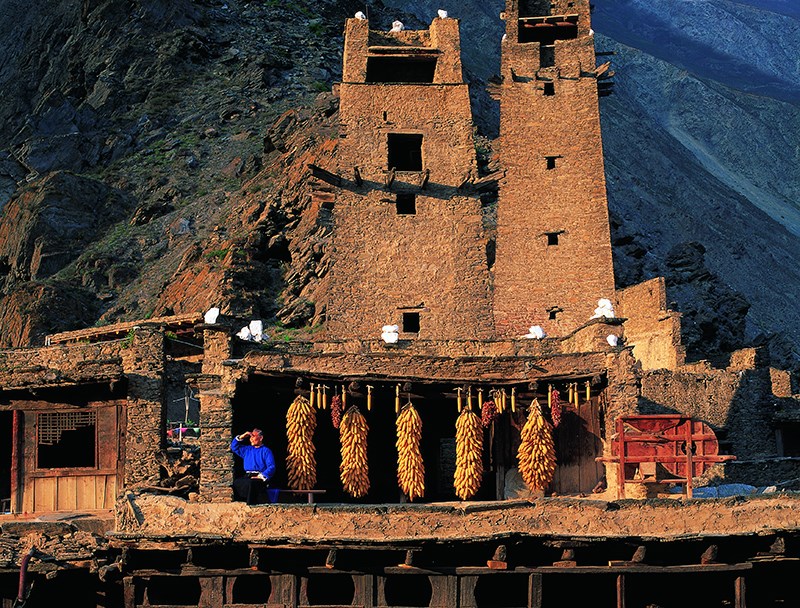7 Days Private Tour Chengdu – Sanxingdui – Jiangyou - Pingwu – Jiuzhaigou – Chuanzhusi - Huanglong – Chuanzhusi - Songpan – Maoxian – Taoping – Wolong – Chengdu
On this trip, we will enjoy the leisure life in Chengdu firstly. After that we drive to Jiuzhaigou, on the way we visit the Sanxingdui Museum of the ruins of the old Shu Kingdom and the Bao'en Temple in Pingwu. The Bao'en Temple has the best preserved old buildings of the Ming Dynasty in China. On this trip, two of China's most beautiful national parks are assembled: Jiuzhaigou (UNESCO World Heritage Site since 1992) and Huanglong (UNESCO World Heritage Site since 1992) amidst the magnificent mountain world of Minshan Mountains in the northwest of Sichuan Province. The crystal clear water, countless alpine lakes, rushing streams and waterfalls, lush vegetation, active wild animals, the rugged peaks, all of these create the unreal beauty of Jiuzhaigou, but its beauty is true. Because of its spectacular and breathtaking karst landscape with countless limestone terraces, the Huanglong National Park is world famous. Continue along the Min River to Taoping Village and visit the traditional residences and fortress towers of the Qiang Minority. Then drive on the Chinese Panda road to Wolong, the first panda reserve of China, and visit the cute Pandas closely. Come back to Chengdu and end our discovery tour of Jiuzhaigou, Huanglong and Panda.
Private travel, great experiences! Please contact us for your tailor-made travel offer.
With individual China Tibet travel, you can decide when, where and how you go on tour by yourself. What's more, you can choose the length of travel and whom you go with.
Hotel, program and itinerary are subjected to change with prior notice.
We must point out that you counter a basic tourism infrastructure in this region. Long journeys on bad roads and on high altitude and delays require good physical fitness, resilience and flexibility of the participants. Program and route changes due to unforeseen events are expressly reserved. If you desire the unknown and have an understanding of contingency, this is the right trip for you.
Kuanzhai Xiangzi | Photo by Liu Bin
Sanxingdui | Photo by Liu Bin
Sanxingdui | Photo by Liu Bin
Sanxingdui | Photo by Liu Bin
Baoen Temple in Pingwu | Photo by Liu Bin
Baoen Temple in Pingwu | Photo by Liu Bin
Baoen Temple in Pingwu | Photo by Liu Bin
Baoen Temple in Pingwu | Photo by Liu Bin
Baoen Temple in Pingwu | Photo by Liu Bin
Jiuzhaigou National Park | Photo by Yu Ning
Jiuzhaigou National Park | Photo by Yu Ning
Jiuzhaigou National Park | Photo by Yu Ning
Tibetan Village | Photo by Liu Bin
Huanglong National Park | Photo by Liu Bin
Huanglong National Park | Photo by Liu Bin
Huanglong National Park | Photo by Liu Bin
Huanglong National Park | Photo by Liu Bin
Huanglong National Park | Photo by Liu Bin
Huanglong National Park | Photo by Liu Bin
Huanglong Temple in Huanglong National Park | Photo by Liu Bin
Huanglong National Park | Photo by Liu Bin
Huanglong National Park | Photo by Liu Bin
Huanglong National Park | Photo by Gao Tunzi
Taoping Village of Qiang Minority | Photo by Liu Bin
Taoping Village of Qiang Minority | Photo by Liu Bin
Panda in Wolong | Photo by Liu Bin
Panda in Wolong | Photo by Liu Bin
Panda in Wolong | Photo by Liu Bin
